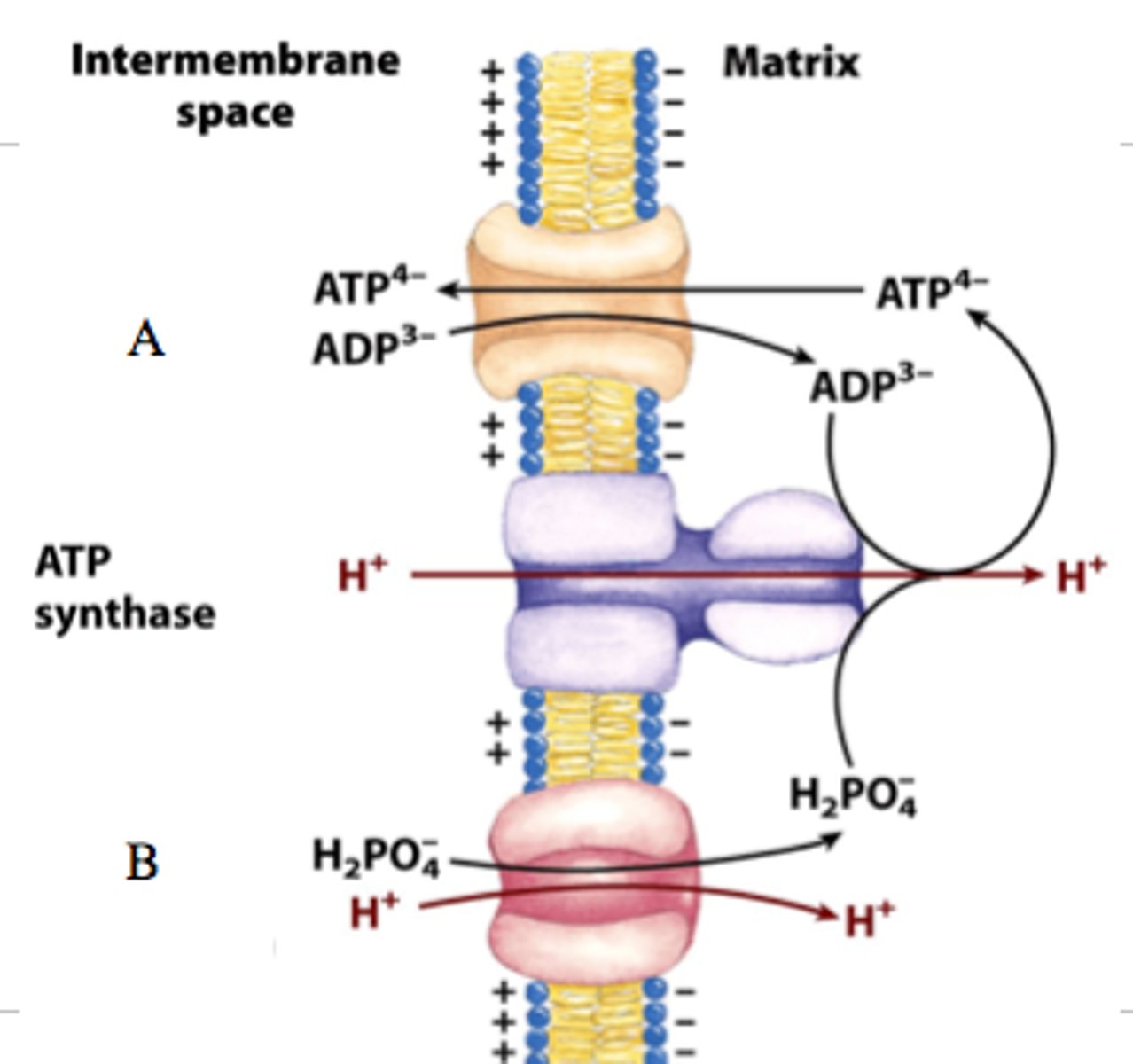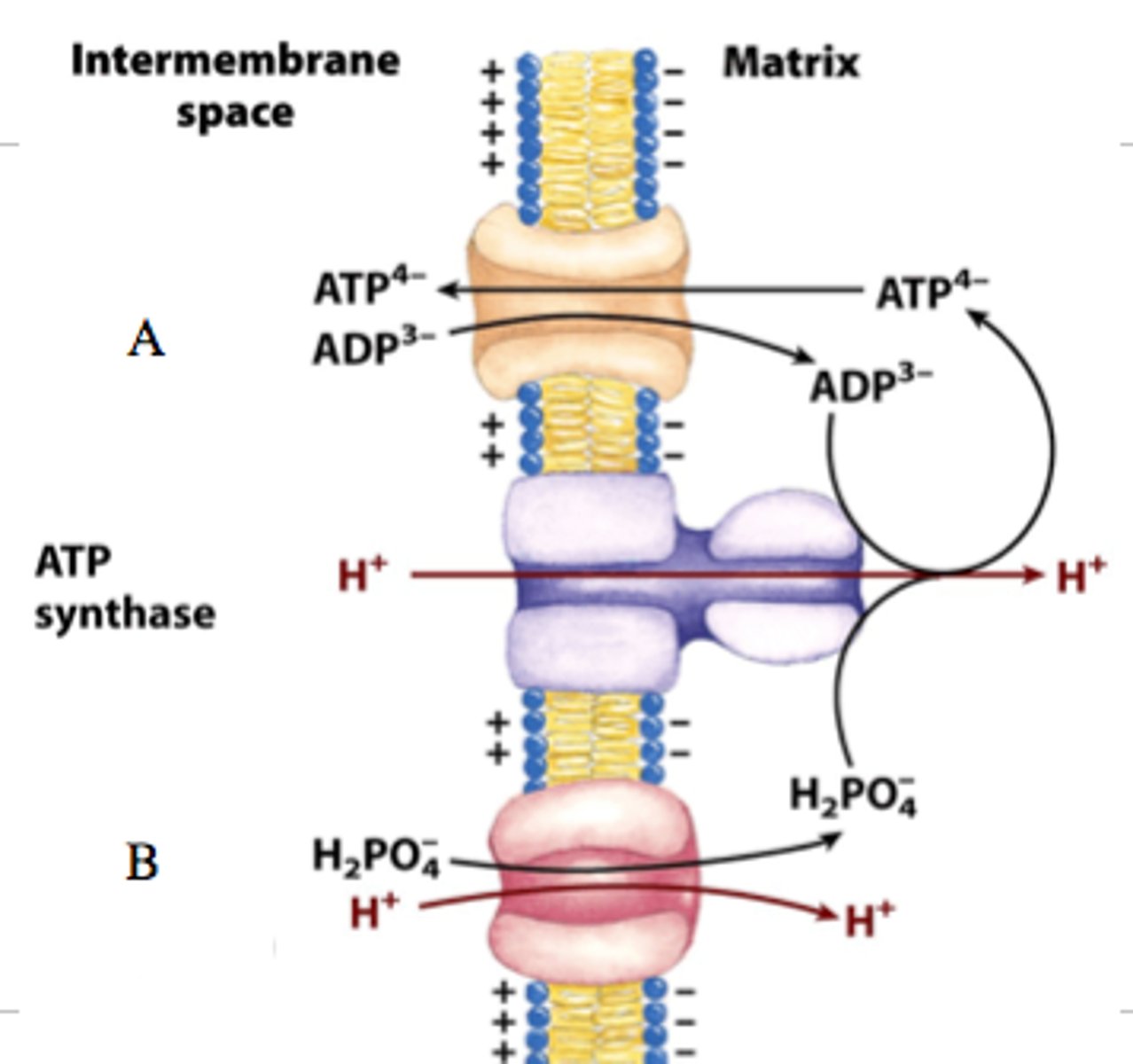Carbohydrate Metabolism Study Set - Key Terms & Definitions
1/58
There's no tags or description
Looks like no tags are added yet.
Name | Mastery | Learn | Test | Matching | Spaced |
|---|
No study sessions yet.
59 Terms
Stages of Cellular Respiration
(1) Acetyl-CoA Production
(2) Acetyl-CoA Oxidation via Citric Acid Cycle
(3) Electron Transfer & Oxidative Phosphorylation
Acetyl-CoA can be produced from what 3 substances?
- Amino Acids: Transamination + Oxidation
- Fatty Acids: β-Oxidation
- Glucose: Glycolysis
What are the 3 fates of Glucose?
- Glycogen: Storage
- Ribose-5-Phosphate via Pentose Phosphate Pathway
- Pyruvate via Glycolysis
What are the 2 phases of Glycolysis?
(1) Energy Investment/Preparatory Phase
(2) Energy Payoff Phase
The breakdown of 6C Glucose into two 3C Pyruvates occurs in 10 steps. The first ____ constitute the Preparatory Phase of Glycolysis.
5
Energy Investment/Preparatory Phase
(1) Glucose + ATP --> G6P
(2) G6P --> Fructose 6-Phosphate (F6P)
(3) F6P + ATP --> Fructose 1,6-Bisphosphate (F1,6P)
(4) F1,6P --> Glyceraldehyde 3-Phosphate (G3P) + Dihydroxyacetone Phosphate (DHAP)
(5) G3P + DHAP --> 2 G3P
Priming Stage
Conversion of Glucose into FBP with the investment of 2 ATP
Splitting Stage
Splitting of FBP into two G3P
Payoff Phase
(6) G3P + 1 NAD+ --> 1,3-Bisphosphoglyverate (1,3-BPG) + NADH
(7) 1,3-BPG + ADP --> 3-Phosphoglycerate (3-PG) + ATP
(8) 3-PG --> 2-Phosphoglycerate (2-PG)
(9) 2-PG --> Phosphoenol Pyruvate (PEP)
(10) PEP + ADP --> Pyruvate + ATP
This process occurs TWICE per Glucose so, overall, 4 ATP and 2 NADH are produced
G3P Dehydrogenase
Enzyme that catalyzes G3P to 1,3-BPG, with NADH as a by-product
Phosphoglycerate Kinase
Enzyme that catalyzes 1,3-BPG to 3-PG, with ATP as a by-product
Substrate-Level Phosphorylation
An enzyme-catalyzed reaction that yields ATP/GTP
Enolase
Enzyme that catalyzes 2-PG to PEP via elimination of water
Pyruvate Kinase
Enzyme that catalyzes PEP to Pyruvate, with ATP as a by-product
Irreversible
NADH Cycle
Recycling of NAD+ and NADH between G3P Dehydrogenase and Lactate Dehydrogenase so that Glycolysis can continue
Lactate Dehydrogenase
Enzyme that catalyzes Pyruvate to Lactate, with NAD+ as a by-product
What are the 3 main regulatory enzymes of the Glycolytic Pathway?
- Hexokinase
- Phosphofructokinase (PFK)*
- Pyruvate Kinase
* - Most important regulatory/rate-limiting enzyme of Glycolysis
Hexokinase is considered to be the regulator of ____.
Glucose Breakdown
PFK1 and Pyruvate Kinase are considered to be the regulators of ____.
Glycolysis
These 2 are more specific to Glycolysis, but all 3 are regulators of Glycolysis
Most allosteric effectors of Glycolysis regulate ____.
PFK1
What are the most important Negative allosteric effectors of Glycolysis?
- Citrate
- ATP
- H+ (low pH)
Products of Metabolism
What are the most important Positive allosteric effectors of Glycolysis?
- AMP
- F2,6BP
- Inorganic Phosphate
Glycolysis takes place in the ____.
Cytosol
Citric Acid Cycle takes place in the ____.
Mitochondria
Oxidative Phosphorylation takes place in the ____.
Mitochondria
Pyruvate Dehydrogenase Complex
3 Enzymes that convert Pyruvate to Acetyl-CoA in the Mitochondria
The Pyruvate Dehydrogenase Complex requires ____ Coenzymes to be assembled.
5
Citric Acid Cycle
(1) Acetyl CoA
(2) Citrate
(3) Isocitrate
(4) α-Ketoglutarate + CO2 + NADH
(5) Succinyl-CoA + CO2 + NADH
(6) Succinate + GTP/ATP
(7) Fumarate + FADH2
(8) Malate
(9) Oxaloacetate + NADH
- Pyruvate from Glycolysis is oxidatively decarboxylated to Acetate
- 2 CO2 + 1 ATP + 1 FADH2 + 3 NADH
NADH goes on to make ATP in ____ and ____.
electron transport/oxidative phosphorylation
Isocitrate Dehydrogenase
Enzyme that catalyzes the β-decarboxylation of Isocitrate to α-Ketoglutarate
Rate-Limiting Enzyme of the Krebs Cycle
α-Ketoglutarate Dehydrogenase
Enzyme that catalyzes Oxidative Decarboxylation of α-Ketoglutarate to Succinyl-CoA
α-Ketoglutarate Dehydrogenase is nearly identical to ____ mechanistically and structurally.
Pyruvate Dehydrogenase
What 5 Coenzymes are required for α-Ketoglutarate Dehydrogenase activity?
- TPP
- CoASH
- Lipoic Acid
- NAD+
- FAD
Succinyl-CoA Synthetase
Enzyme that catalyzes Succinyl-CoA to Succinate, with GTP/ATP as a by-product
Succinyl-CoA is a ____.
high-energy intermediate
Makes Substrate-Level Phosphorylation possible
What are the 3 main regulatory enzymes of the Citric Acid Cycle?
- Citrate Synthase
- Isocitrate Dehydrogenase
- α-Ketoglutarate Dehydrogenase
Electron Transport
Electrons carried by Coenzymes (NADH/FADH2) are brought to the inner mitochondrial membrane to generate a proton gradient
Oxidative Phosphorylation
The production of ATP using energy derived from the redox reactions of the Electron Transport Chain (ETC)
Occurs at the Inner Mitochondrial Membrane
What is the difference between Substrate-Level Phosphorylation and Oxidative Phosphorylation?
Oxidative Phosphorylation utilizes electron transport while SLP uses enzymes
The Inner Mitochondrial Membrane is impermeable to most small molecules and contains ____.
ATP Synthase
Complex I
NADH Dehydrogenase transfers electrons from...
- NADH --> CoQ
- Pumps 4 H+ out of the Mitochondrial Matrix into the Intermembrane Space per 2 e-
Complex II
Succinate Dehydrogenase
- Succinate + UQ --> Fumarate + UQH2
Complex III
UQ-Cytochrome C Reductase
- Accepts e- from Ubiquinol, passing it to Cytochrome C via the Q Cycle
- Pumps 4 H+ out of the Mitochondrial Matrix into the Intermembrane Space
Ubiquinone
Lipid-soluble coenzyme that transfers e- from Complex II to Complex III in the ETC
Cytochrome C
Water-soluble enzyme that transfers electrons from Complex III to Complex IV in the ETC
Complex IV
Cytochrome C Oxidase
- 4H+ + O2 + 4e- --> 2H2O
- Pumps 2 H+ out of the Mitochondrial Matrix into the Intermembrane Space
Oxygen is the ____ of e- in the ETC.
terminal acceptor
All of the proteins in Mitochondrial ETC Complexes have ____.
Fe-Sulfur Centers
Aid in e- transport
What role does H+ within the Intermembrane Space of Mitochondria play?
It travels down a concentration gradient into the Mitochondrial Matrix through ATP Synthase. This process drives the production of the majority of ATP in metabolism.
Uncouplers
Compounds that prevent ATP synthesis by shuttling H+ ions across the Mitochondrial membrane, dissipating the proton gradient
What are the 2 subunits of ATP Synthase?
- F0
- F1
F0
Transmembrane pore of ATP Synthase that mediates H+ transport
What 2 carriers are vital for ATP production in the ETC?
- Adenine Nucleotide Translocase
- Phosphate Translocase
Adenine Nucleotide Translocase
Antiporter that carries ADP into and ATP out of the Mitochondrial Matrix to support ATP synthesis

Phosphate Translocase
Symporter that transfers H+ and Phosphate groups into the Mitochondrial Matrix to combine with ADP

How much ATP is made through one ETC cycle?
4 ATP
- 2.5 from electrons entering as NADH
- 1.5 from electrons entering as Succinate
____ ATP per Glucose is made if the Glycerophosphate Shuttle is used.
30
____ ATP per Glucose is made if the Malate-Aspartate Shuttle is used.
32
Uncoupling of mitochondrial electron transport and oxidative phosphorylation ____.
halts all mitochondrial metabolism, but allows continued O2 consumption